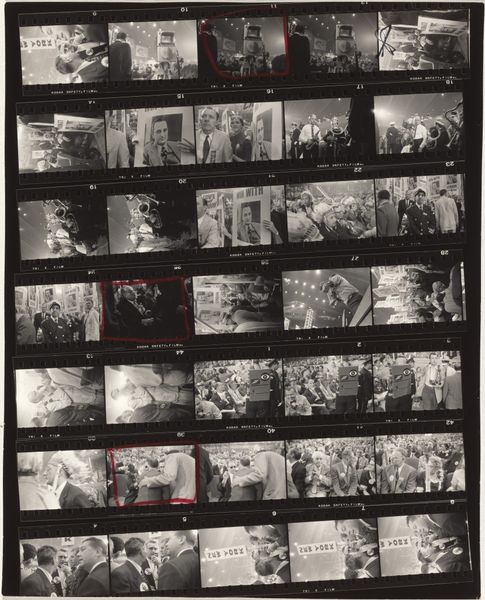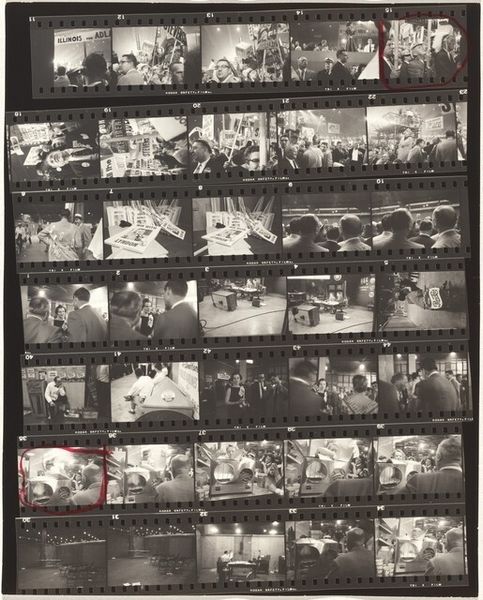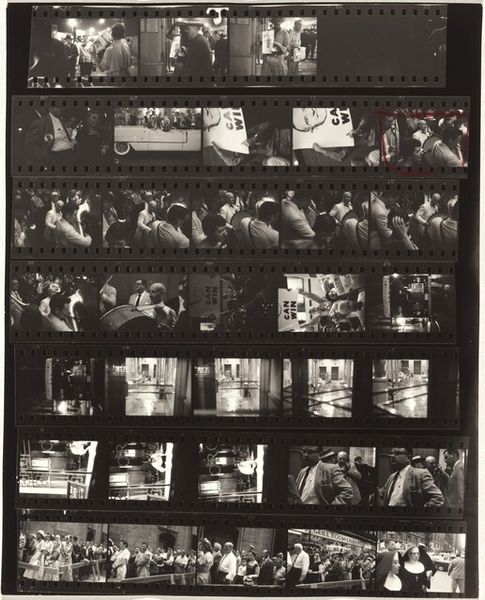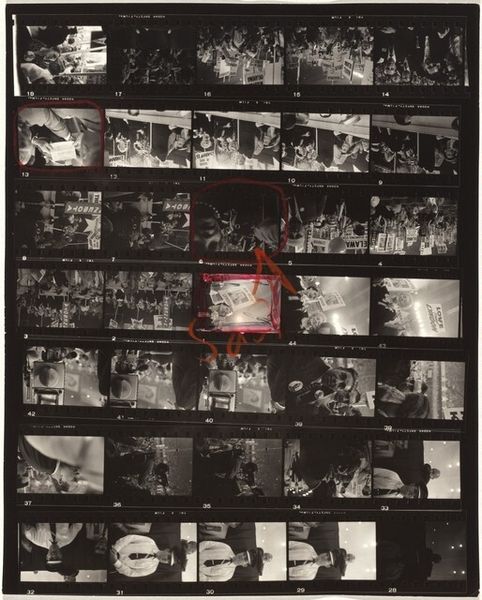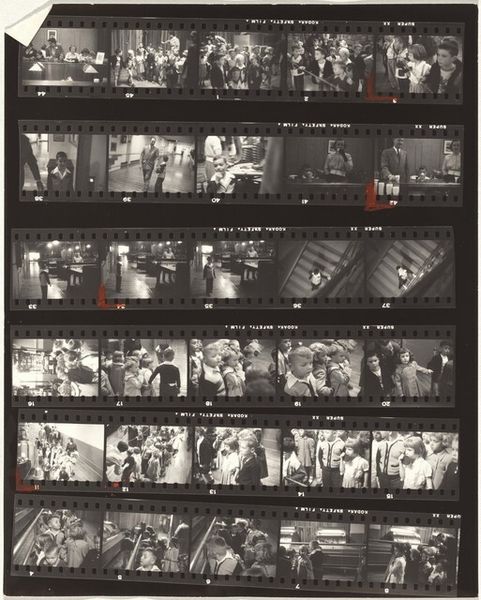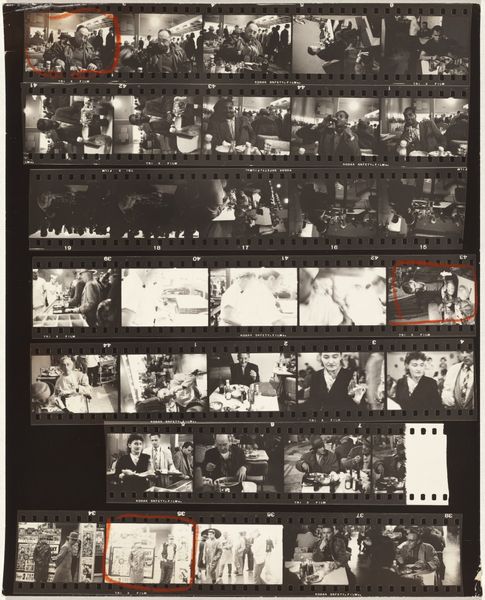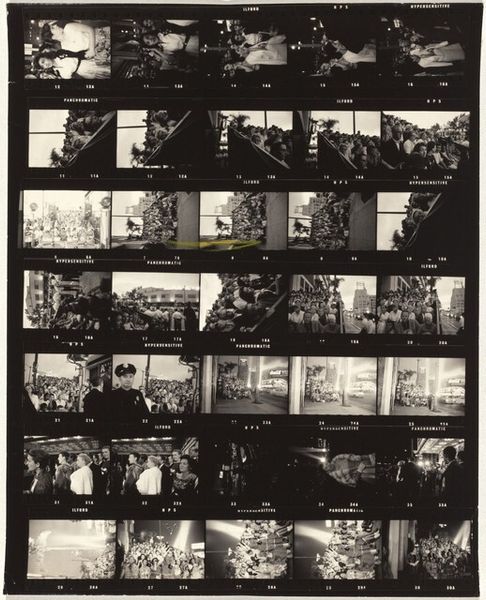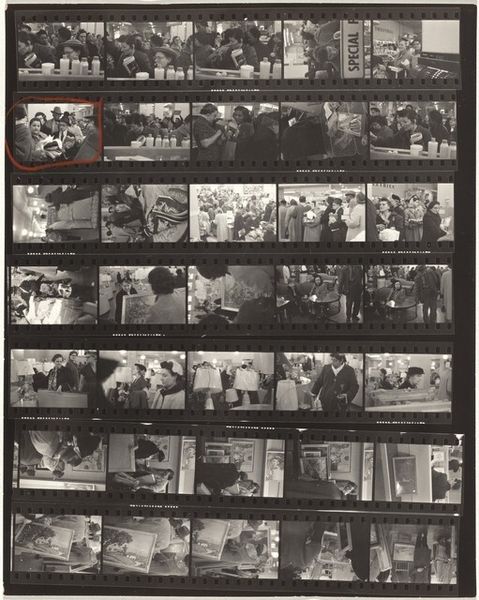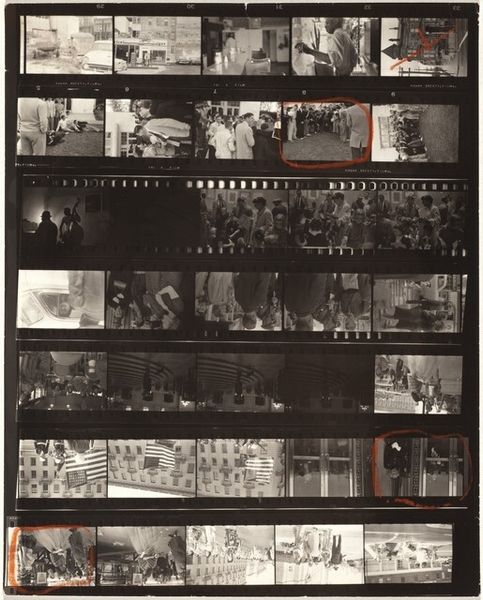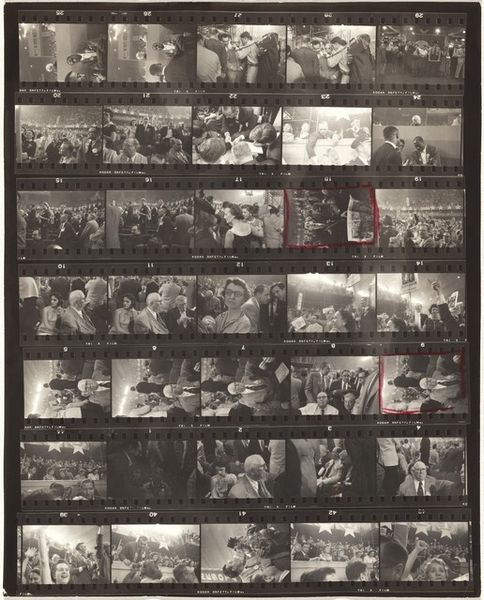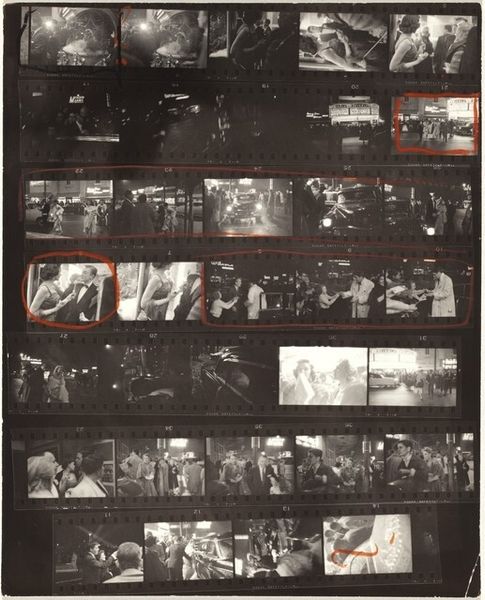
print, photography, gelatin-silver-print
#
portrait
#
film photography
# print
#
social-realism
#
street-photography
#
photography
#
gelatin-silver-print
#
film
#
modernism
Dimensions: overall: 25.3 x 20.3 cm (9 15/16 x 8 in.)
Copyright: National Gallery of Art: CC0 1.0
Curator: This is Robert Frank’s “Convention 16,” a gelatin silver print made in 1956. Editor: The first thing I notice is the contrast between order and chaos. The arrangement of the contact sheet provides a rigid structure, but the images themselves seem to capture spontaneous, perhaps even haphazard, moments. Curator: It is a work from Frank's series “The Americans”. Consider the period. Post-war prosperity was being questioned and captured with gritty social-realism, rejecting the ideal of the perfect image to show more about the material conditions that allow some to prosper, at the cost of many others. Editor: Visually, the high contrast reinforces this mood. The deep blacks create a sense of mystery, bordering on the melancholic, emphasizing the rough texture of the materials and film used to capture the scene, drawing the eye to formal relations within the scenes themselves. There is a tension in the forms that emphasizes the tension present within the scenes portrayed. Curator: His subjects weren’t movie stars. They were everyday citizens during the post-war economic boom, living within complex and sometimes oppressive systems. The format mirrors the industrial assembly-line process of that moment; the photo medium captured as it relates to capitalist culture and political production. Editor: Yet there is artistry in his choice of composition. He isn't simply documenting; he's arranging visual components that, in many cases, serve to abstract moments or people by way of shadows and obscured framing. Curator: Absolutely, and even his method reveals process—from choosing film stock, to developing it, printing, and how he made this as a commentary on the burgeoning American political machine that demanded conformity while processing humans as automatons. Editor: I think focusing on the surface materiality provides us entry points into interpreting broader implications, social ones included. Thinking more simply of balance, contrast, tone, one can have an almost visceral reaction to the works portrayed, a visual poem if you will. Curator: True, these raw and, at times, imperfect photos exposed some truths, even then, about that period, while reflecting a perspective of labor involved in production, a moment of mass conformity—highlighting issues present in contemporary socio-economic landscapes that carry echoes to the present day. Editor: In that sense, it offers an invitation for close inspection that resonates, I think, beyond its sociohistorical context.
Comments
No comments
Be the first to comment and join the conversation on the ultimate creative platform.
